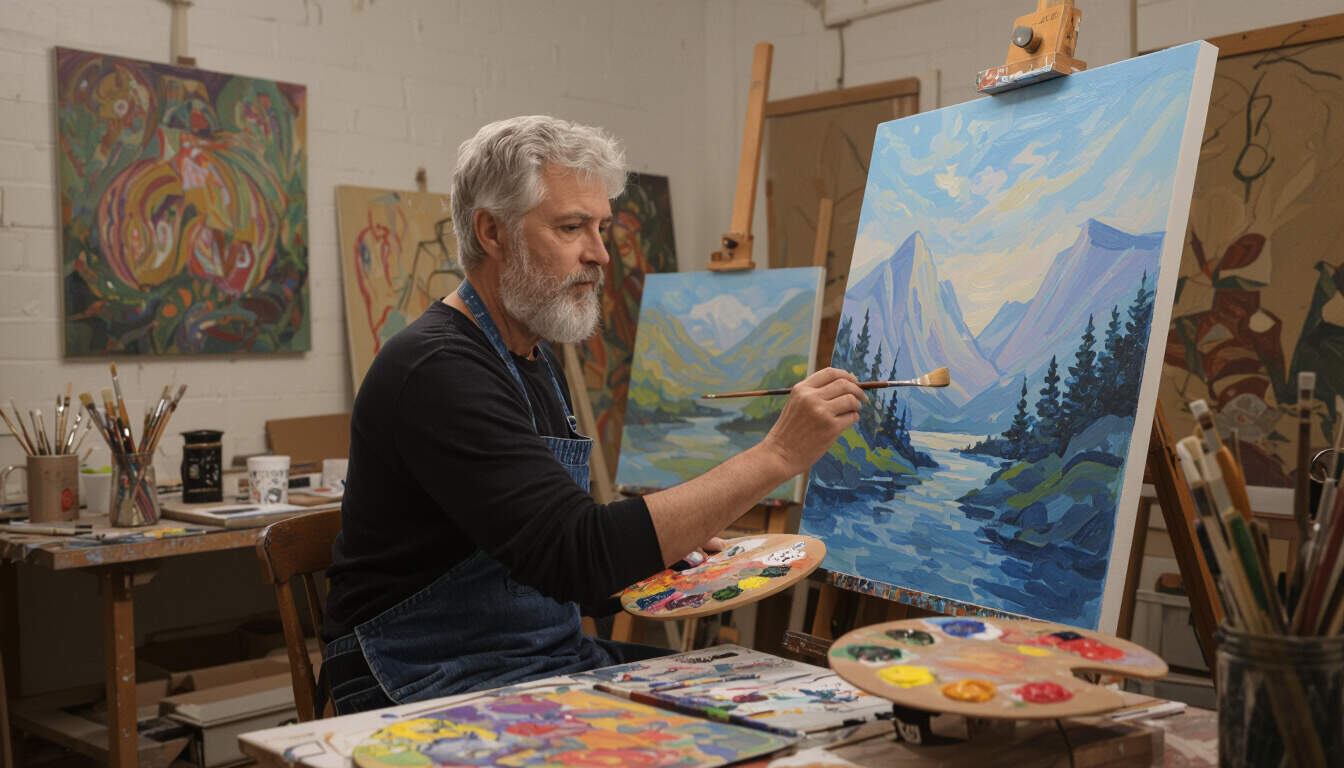Affiliate Marketing in the Art Sector
 by Verner Mayer
by Verner Mayer
Discover how affiliate marketing can help artists and entrepreneurs generate passive income by promoting art-related products. Learn practical steps to select programs, create content, and build an audience for steady earnings in the art field.

Affiliate marketing offers a straightforward way for artists and online entrepreneurs to earn money without creating their own products. This approach involves promoting items from other companies and receiving a commission for each sale made through your efforts.
For those in the art sector, this means partnering with brands that sell art supplies, online courses, or digital prints. By integrating these promotions into your blog, social media, or website, you can turn your passion for art into a source of passive income.
To begin, identify affiliate programs that align with your niche. Many platforms like Amazon Associates or ShareASale feature partners in the creative industry. Look for ones that offer high-quality art products such as paints, canvases, or software for digital artists. Once selected, sign up and wait for approval, which often takes a few days.
After joining a program, focus on building your online presence. A simple website or blog dedicated to art tips can serve as your main hub. Use this space to share tutorials, reviews, and recommendations. For example, if you review a set of brushes, include your affiliate link so visitors can purchase them directly.
Content creation is key to success. Write posts or produce videos that genuinely help your audience. A well-crafted article on beginner techniques might include links to affiliate programs for essential tools. Remember, authenticity matters—only promote items you trust and have tested.
Tracking your performance is essential for growth. Most programs provide dashboards to monitor clicks, conversions, and earnings. Analyze this data regularly to see what works best. If a post about watercolor techniques drives more sales, consider creating more content in that area.
One challenge is standing out in a crowded market. To address this, engage with your community through comments or emails. Building relationships can lead to loyal followers who are more likely to use your links.
Monetizing through email lists is another effective strategy. Collect subscriber information via your site and send newsletters with exclusive deals. For instance, highlight a discount on art kits from your affiliates, encouraging sign-ups and purchases.
Consider the legal aspects as well. Disclose your affiliate relationships clearly to maintain trust. Add a simple statement at the end of your posts saying you may earn from qualifying purchases.
As you scale, diversify your partnerships. Don't rely on just one program; explore options in different art subfields like photography or sculpture. This can stabilize your income streams.
Tools like analytics software can aid in optimization. They help identify which content generates the most revenue, allowing you to refine your approach over time.
Finally, patience is important. Earnings might start small, but with consistent effort, they can grow. Many artists report steady income after several months of dedicated promotion.
Steps to Get Started
Here is a simple list to guide you:
- Research and join relevant affiliate programs.
- Set up a blog or social media account focused on art.
- Create valuable content with embedded links.
- Track and adjust your strategies based on results.
- Engage with your audience to build loyalty.
Tips for Maximizing Earnings
- Focus on niches like digital art where demand is high.
- Use visuals such as photos of your own artwork to attract viewers.
- Experiment with different promotion methods, like posts or stories.
- Keep learning through free resources to improve your skills.
- Stay consistent with updates to keep your audience engaged.
In summary, affiliate marketing provides a practical path for artists to generate passive income. By promoting relevant products and focusing on quality content, you can build a sustainable business.
